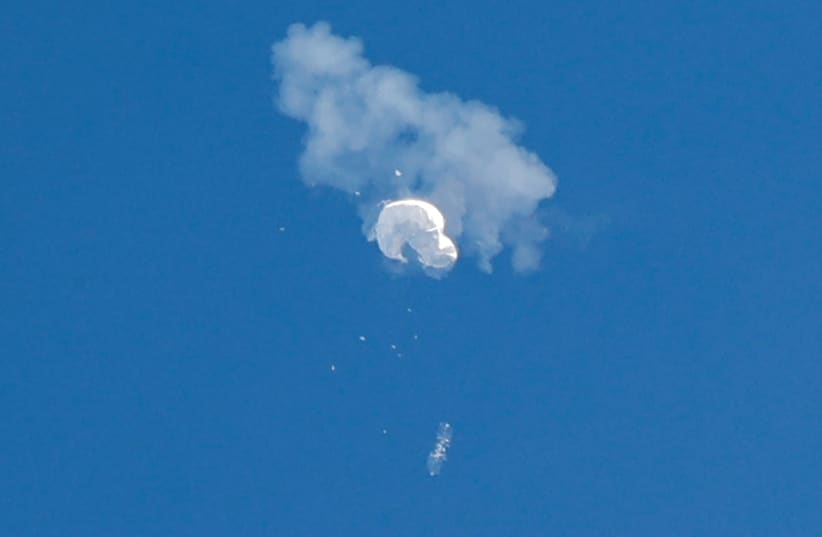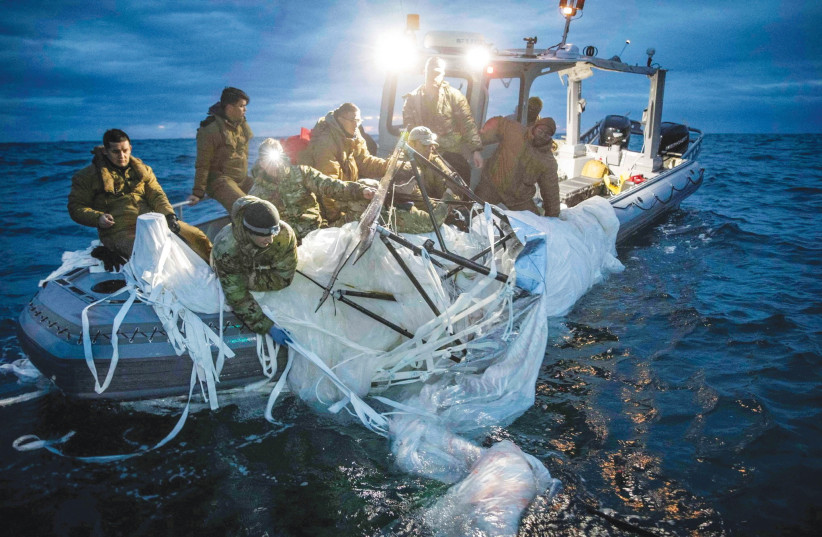Despite the furor over the incident involving the Chinese balloon shot down by the US and described as an instrument for spying on several countries, including India, Japan, Taiwan and the Philippines, the significance of the incident is that it reflects the reality of the cold confrontation between China and the US at the current stage.
The balloon has attracted political attention far beyond its military and intelligence significance. It has become a symbol of the limits of US intelligence capabilities in the face of possible Chinese infiltration. Politically, the balloon has led to the postponement of US Secretary of State Antony Blinken’s visit to China.
Lasting impact of the balloon incident
For its part, Beijing acknowledged that relations with Washington had been “seriously affected and damaged” by the incident. China protested the use of force to shoot down the balloon and accused the US side of overreacting and “seriously” violating international law. The issue now revolves around the balloon wreckage as the black box of the whole affair.
Washington has decided not to return the first remains of the wreckage to China, as this is out of the question. This is an issue that will certainly irritate the Chinese. Acquiring the wreck means access to technologies that reflect the extent of China’s technological progress.
In this way, the debris became a gift that easily found its way to the US. There is no doubt that much of the US response is related to the decisions at hand.
When the balloon was discovered in US airspace, the decision was tantamount to building a case to justify the attack and acquisition of the wreckage, regardless of whether the balloon was for military or civilian purposes, because the two purposes are intertwined and reflect technological advances that are difficult to separate between civilian and military.
For example, knowledge of the state of the art in meteorological research, as the Chinese say, also seems to be useful for weapons and espionage techniques, according to the American description of the balloon. In any case, the wreckage of the airship would be a valuable catch for the US, at least to learn about the limits of Chinese espionage capabilities.
THIS REDUCES the problem to the question of what remains of the balloon debris. China is fully aware that it is a gateway for improving US intelligence on China’s technological capabilities and returning these remains will achieve nothing as long as they remain for a while in the hands of US intelligence agencies. These agencies say that the balloon is part of a large-scale surveillance program involving a number of similar balloons. The US does not know the exact number of balloons that are part of this program.
Therefore, the US treats the incident as a purely intelligence matter. The political part of the matter is only to defend and politically justify the US position, even under the guise of a diplomatic crisis that puts China in an accusatory position and later exploits this to put pressure on it. Washington is unlikely to be politically alarmed by the incident.
President Joe Biden’s recent State of the Union address made a passing mention of it, even though it was delivered at the height of the crisis. Biden himself confirmed after the incident that relations with China had not been weakened by the incident. Beijing well understands the US position in this regard and only stressed that the US response was “correct and as swift as possible.”
The whole affair is about implicit messages being exchanged. Behind the scenes, there is more at stake than is stated, as is usual in international relations at this level of conflict.
One of the most important points is that if what US intelligence officials say about the balloon is true, especially given that it is part of a program that has seen at least 20 missions carried out on five continents in recent years, Washington has obtained indications of an important intelligence file that will enhance its options in the cold conflict that is gradually raging with its strategic adversary, China.
The balloon incident resembles an information battle in the context of a war that will last for a long time. There is evidence that the US knew the direction of the Chinese balloon. The US military only shot it down when it reached a certain point that seemed to offer a good opportunity to collect its remains.
The projection took place days after it had been sighted and tracked, according to the American version. This suggests that Washington’s priority was not to keep relations with Beijing free of tensions but to exploit the information hunt, fabricate a diplomatic crisis and then cool it down after cornering China – to kill two birds with one stone.
The only adventure in this scenario would have been to crash the wreckage of the balloon into populated areas, which would have embarrassed the US military. This was completely avoided. But the whole thing may not be as simple as we think.
The balloon could be a Chinese trap for US surveillance circles to divert attention from advanced technology or to identify the possible reaction and limits of the US response to the information threat in the event of the deployment of advanced balloons or even to inform the US of some of China’s information capabilities as one of the mechanisms of preemptive deterrence.
EXPERTS RULE out the possibility of derailing the balloon as its flight path is entirely focused on US military areas. There are indications that the Biden administration is treating the incident as part of its new vision to treat China as a major threat to US national security.
This explains why the matter was not proactively addressed immediately after the balloon was discovered, especially since this is not the first time Chinese balloons have approached US airspace. But what happened was focused on managing the issue in light of the new strategic reality.
Moreover, Republican accusations that Biden was soft on China played a role in the American hard line this time and there was an attempt to emphasize resolve in the face of what was described as China’s violation of American security, to bolster Biden’s firm approach to defending American interests. It is well known that such practices are common among major countries.
They were often repeated during the Cold War. Spying remains an important issue in relations between countries, even between friends, not just between adversaries. In most cases, therefore, the handling of these files remains confidential among the professionals concerned.
However, in the event of political tensions or strategic rivalries, they become public. A very important point is also Biden’s statement that he gave instructions on Wednesday to shoot down the balloon as soon as possible. But the order was carried out on Saturday after military officials had advised against shooting it down as it flew over the country.
This means that the matter was transferred from the politicians to the security personnel, who decided according to certain guidelines, including not to miss the opportunity and to use the balloon as much as possible, whether at the information level or at the strategic level, to promote and consolidate the idea of the Chinese threat among the US allies and to use this to promote plans to contain China’s growing influence in the world.
In conclusion, the crash of the Chinese balloon will slide politically and diplomatically but will not be the last in the infowar between the two countries. The trust gap and mutual mistrust will widen. But we must not forget that the huge volume of trade exchange (NIS 2.5 trillion in 2022) will always remain one of the guiding principles of relations between the two strategic adversaries.
The writer is a UAE political analyst and a former Federal National Council candidate.

